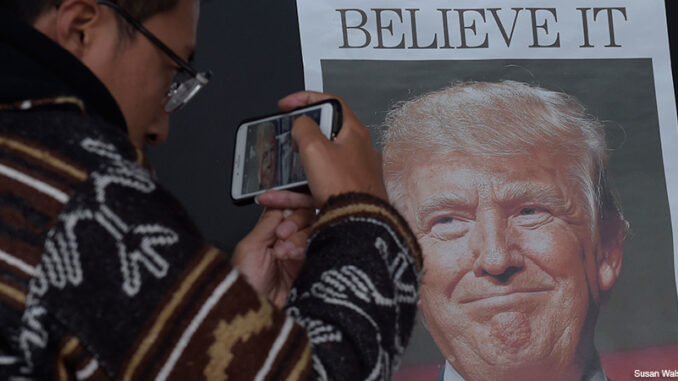

One of the most surprising things about Donald Trump’s victory on Tuesday night was that few people expected it: almost all of the polls leading up to the election predicted that Hillary Clinton would be the decisive winner. So why did they get their predictions so wrong?
Exit polls are a national survey of voters. They can give us a sense of how certain groups of people claim to have voted. And exit polls from the 2016 presidential election revealed some unexpected trends.
Race
Trump won the white vote by a large margin (58 percent). While the percentage of the electorate made up of white voters has fallen, it still hovers around 70 percent–a significant portion of the voting population.
Throughout the election, the Clinton campaign planned to rely heavily on the Latino/a vote. Trump’s campaign centered on building a wall between the United States and Mexico, and he also made many disparaging comments about Mexican-Americans and illegal immigrants. The Clinton campaign hoped that would be enough to encourage a high Latino/a turnout. Unfortunately for Hillary Clinton, that didn’t happen: the Latino/a vote only rose by one percent from 2012. Even more interestingly, President Obama was able to gain 71% of the Latino/a vote during his reelection run in 2012; despite Trump’s divisive campaign, Clinton only managed to capture 65 percent to Trump’s 29 percent.
While African-American voters heavily supported Clinton (88 percent, to Trump’s 8 percent), it was still not as big a lead as Obama enjoyed in 2012, when the president took 93 percent of the African-American vote. And African-Americans did not turn out in as high of numbers as they did in 2012.
Age
Clinton also failed to capture young voters in the high numbers that Obama did four years ago–only 54 percent of voters ages 18 to 29, compared to Obama’s 2012 statistic of 60 percent. This was at least in part due to the number of young voters who supported Bernie Sanders in the primary and never recovered from their disappointment in Clinton as a candidate.
Gender
The Clinton campaign also expected to lock up a large portion of the female vote–both because Clinton herself is a woman, and as a result of Trump’s comments about women throughout his campaign, plus the allegations of sexual assault brought against him. However, roughly 43 percent of women still voted for Trump. Clinton led the female vote by 12 points, which is not nearly what the campaign had hoped for. (Obama led by 11 points four years ago.)
Education
The level of education that voters had achieved was also a factor in determining in their vote. While President Obama was able to win both voters with a college education and those without, in this election, education level made a big difference. While Clinton won college educated voters by a large margin, Trump won voters without a college degree by eight points.
Religion
White evangelical Christians make up 26 percent of the American electorate. Despite the fact that Trump is not himself religious, he was able to capture the evangelical vote by a wide margin: over 80 percent. It is possible that this is due to Clinton’s openly pro-choice stance toward abortion rights throughout her campaign.
Any single one of these elements would have been damaging to Clinton’s campaign. Taken together, however, these setbacks determined her overall loss, despite what polls had predicted in the days leading up to the election.
